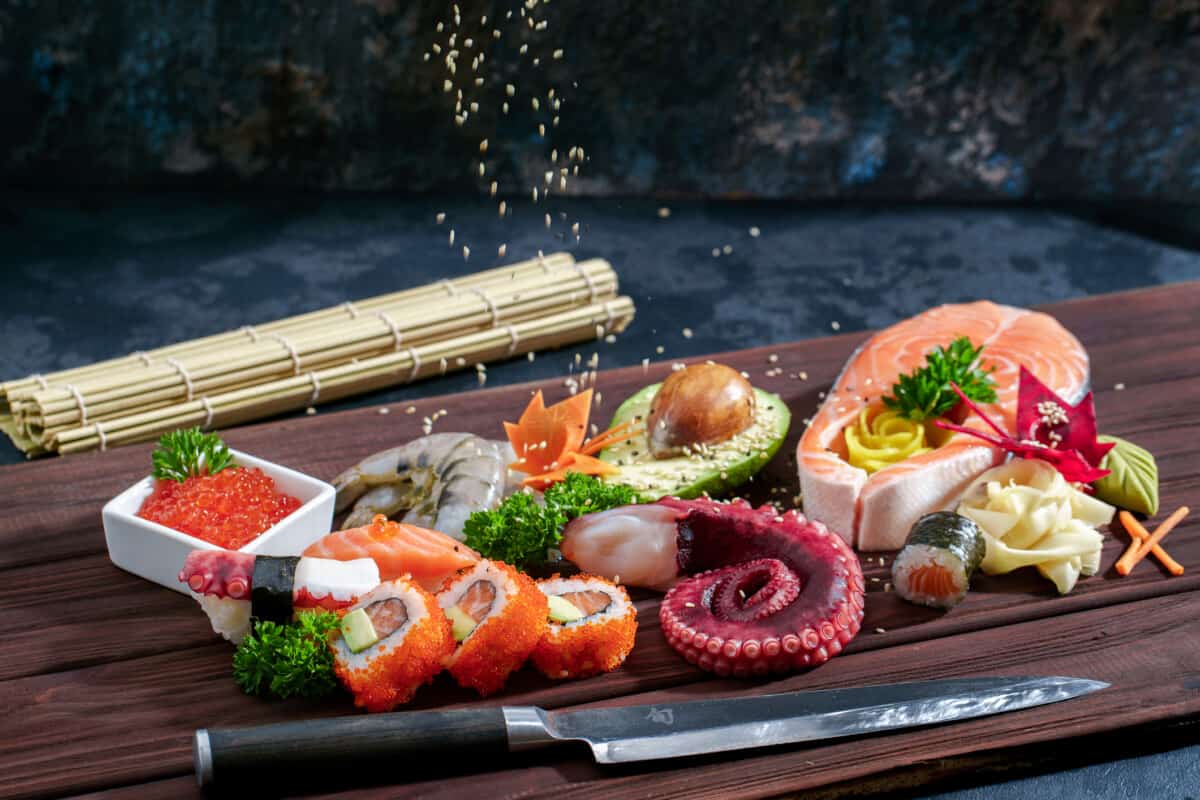Japan is known for innovation, rich tradition and culture, and a myriad of sights to see. There are plenty of reasons that most people would jump at the chance to visit Japan. Regardless of the main reason, you visit Japan, one of the things you must do while you’re there is indulge in unique Japanese food items.
Japanese food is known for being creative and unique. Sharing a meal with close friends and family is a sacred practice in Japan, full of many customs and traditions. Therefore, food is something that Japanese people tend to be quite passionate about.
While there are varied ingredients that stand out in Japanese food, perhaps one of the things Japanese cuisine is most famous for is its seafood. Not only are they able to source a variety of fresh fish in Japan, but they know how to prepare it in its raw form or cooked in unusual ways.
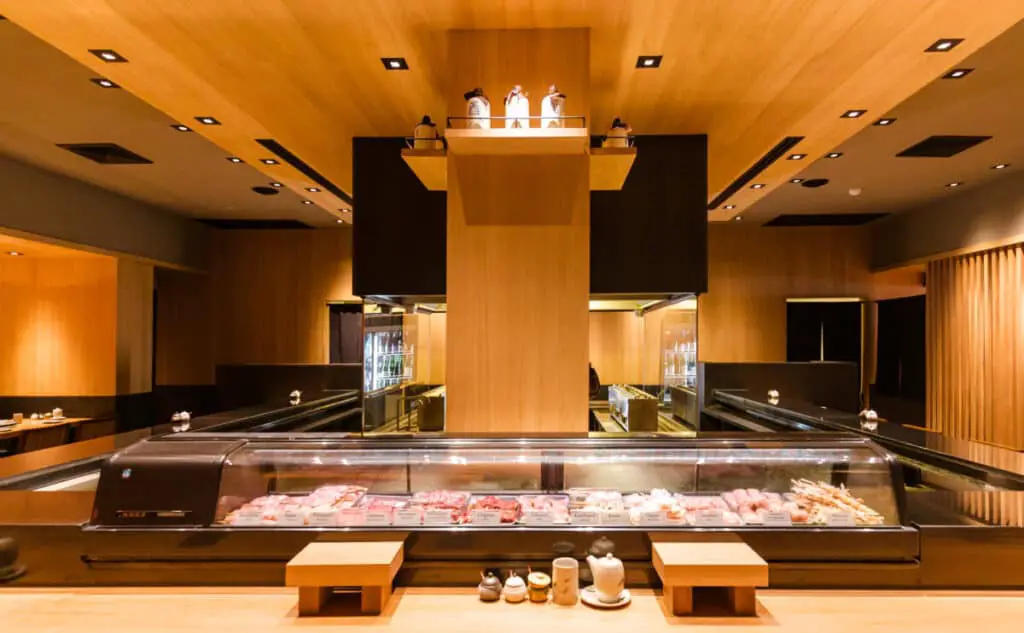
Japan is one of the countries that most foodies have on their wish list. To go into Japan in the hopes of indulging in all of their authentic cuisines, you have to be somewhat of an adventurous eater. While people equate Japanese food with sushi immediately, their cuisine is so much more than this one dish.
Therefore, if you are an adventurous eater who will try anything at least once, there are some must-try items to seek out while you’re in Japan.
Unagi
Unagi is a dish that has been enjoyed in Japan for a very long time. Unagi is a Japanese freshwater eel that is typically sliced and grilled and served on top of rice. Sometimes, unagi is served on its own.
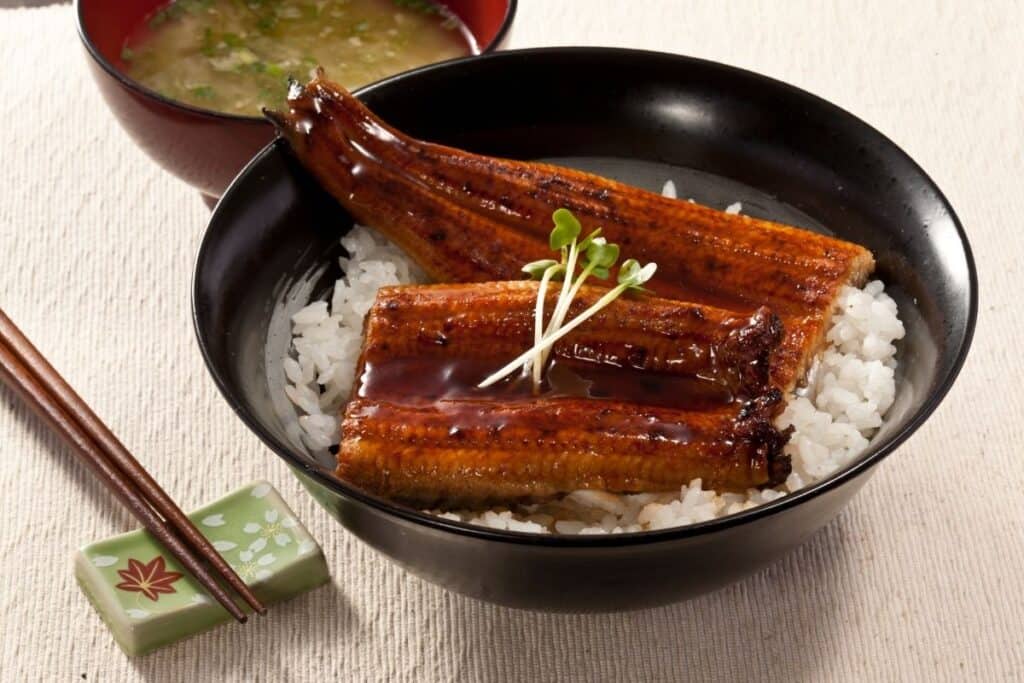
While it is quite a common dish in most restaurants across Japan, it’s one that is said to be delicious and especially refreshing in the summer.
It’s also fairly tame since it’s baked and less adventurous food for those who may be a little hesitant to eat raw fish or sashimi. It’s said to have a flavor similar to chicken.
Nama Tamago
Nama Tamago is a raw egg, but these raw eggs are from chickens that are raised in a very specific way. In Japan, they take food preparation very seriously and thus have less chance of having bacteria as raw eggs in the west would.
When it comes to raising chickens in Japan, everything from what they eat to the handling of their eggs is done in a very careful manner to maintain the highest safety standards.
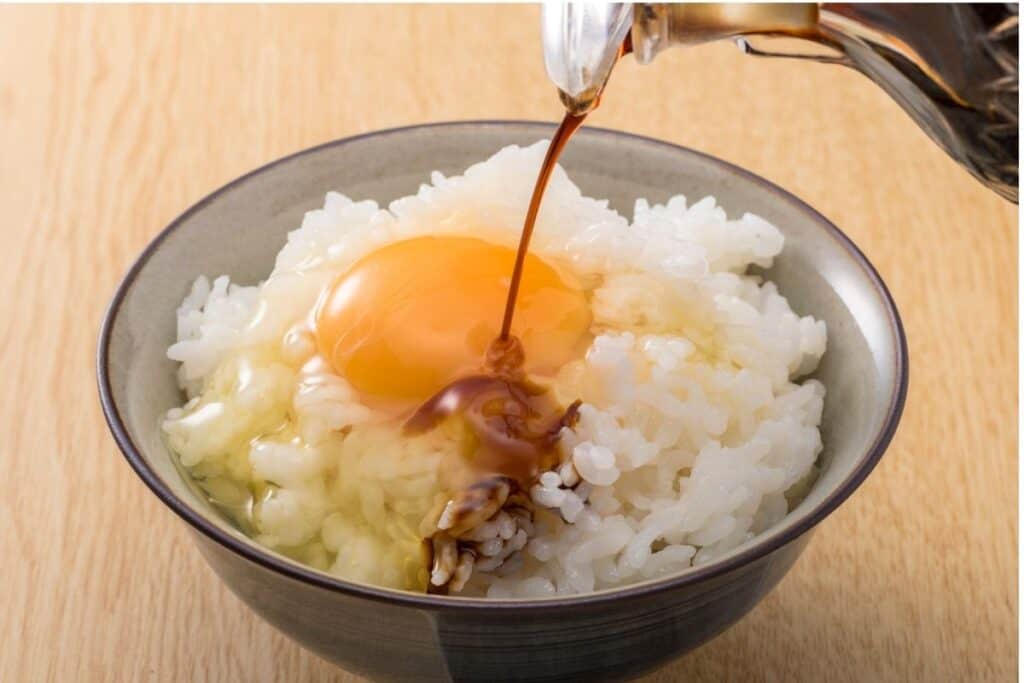
In order to enjoy nama Tamago, a raw egg is usually cracked in a bowl with some drops of soy sauce. Then, it is poured over a bed of rice to create a simple dish.
Sometimes, other foods are added to create a different dish altogether. This is a common dish in Japan since it’s very affordable and easy to make.
Egg and rice are always a delicious combination but prepared this way, the flavor mixture is completely transformed. The soy sauce also helps to bring out the flavor of the raw egg for a rich and creamy traditional Japanese dish.
Fugu
Fugu is pufferfish, which is somewhat controversial. This is because if pufferfish is not prepared properly, they can be poisonous. If you are adventurous enough to go for it, be sure that you’re going to a restaurant that is certified in the preparation of fugu.
It’s not recommended to find the most affordable restaurant or to try and prepare pufferfish yourself. It’s too dangerous to risk it. Certified restaurants know how to handle this fish raw and make it safe for consumption. It’s worth spending the money necessary to try the delicacy safely.
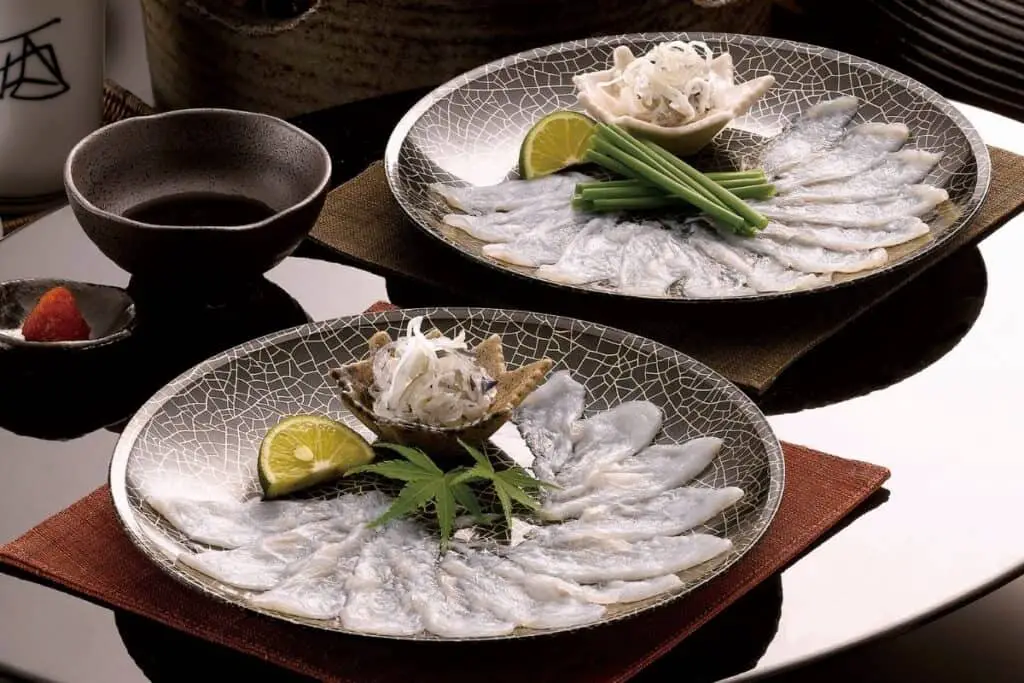
This delicacy is typically only enjoyed in Japan. When served, it is usually sliced very thin and dipped in sauce. The sauce consists of grated daikon and red pepper, and the dish is also sometimes accompanied by onion.
Some restaurants will also prepare the fugu with tempura, rice, or sake. It’s also recommended to try fugu if you’re visiting Japan in the winter when the fish are in season.
Ise Ebi
Trying Japanese lobster, or ise ebi, is a must, but it will come with a higher price point. This is not uncommon for lobster. However, eating lobster in Japan is a different experience than in the rest of the world, where it’s usually boiled and soaked in butter sauce.
You can find ise ebi served in a couple of different ways in Japan. Often, it’s served raw and is said to be fairly similar to sashimi. It is also sometimes cooked and mixed into pasta or noodle dishes. It can also be grilled or roasted with a little bit of salt.
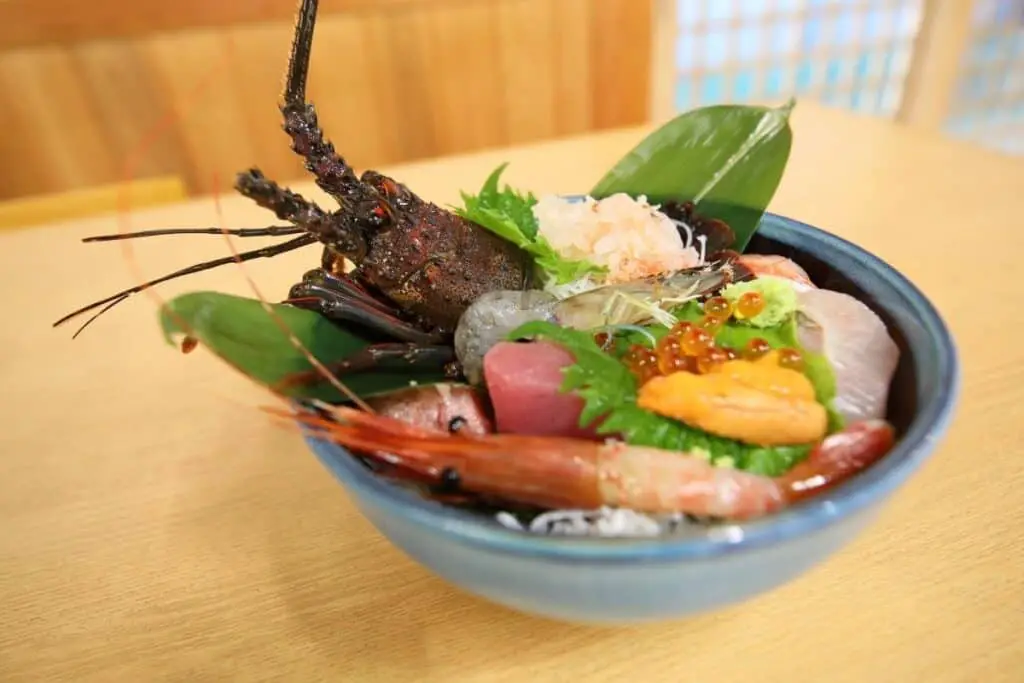
Inago no Tsukudani
Eating bugs is very common for an adventurous eater, and Japan is no stranger to indulging in the nutritional value of bugs. That being said, getting your hands on inago, or grasshopper, may have you going on a bit of an adventure as it’s not widely sold.
To make inago, grasshoppers are boiled and seasoned with soy sauce and salt or sugar. The grasshoppers will then be a little bit crunchy with a punch of sweetness and stickiness from the seasoning.
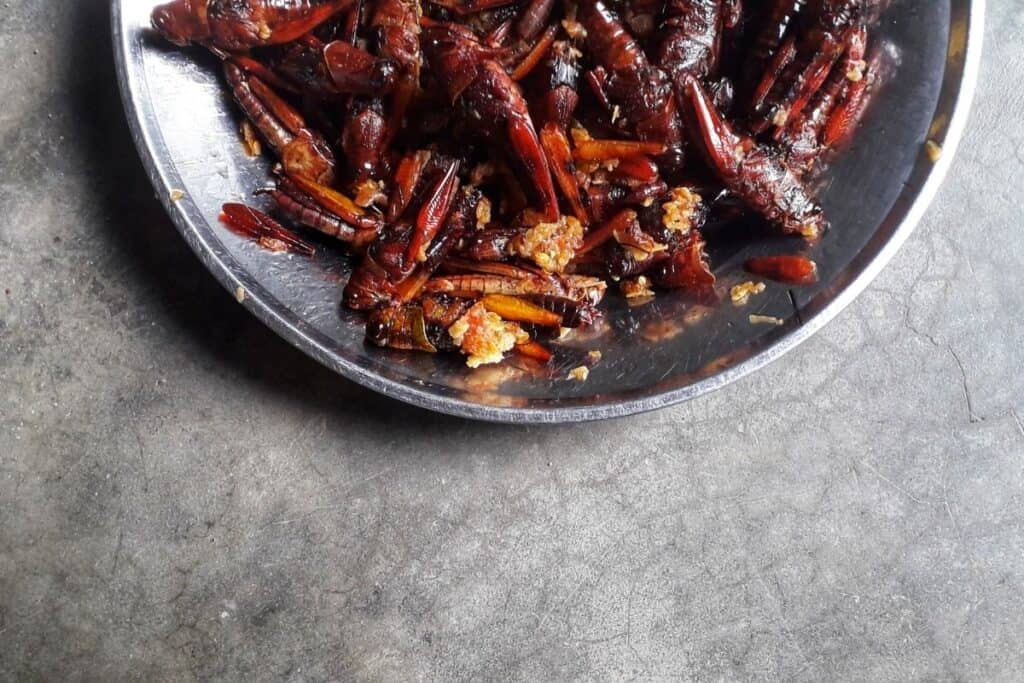
This dish has quite an interesting history as well. Those living in rural areas in Japan would have to eat insects as it wasn’t as easy for them to fish or purchase prepared food. Thus, inago was used as a food item. In order to find it, you’ll probably have to travel to Nanago in Japan.
Kamaboko
Kamaboko is a fish cake made from fish paste. Fish paste is made by pressing the fish, forming it into a roll, and steaming the roll. This process takes away a lot of that pungent fish taste that can overpower the natural flavor. It can be enjoyed either hot or cold.
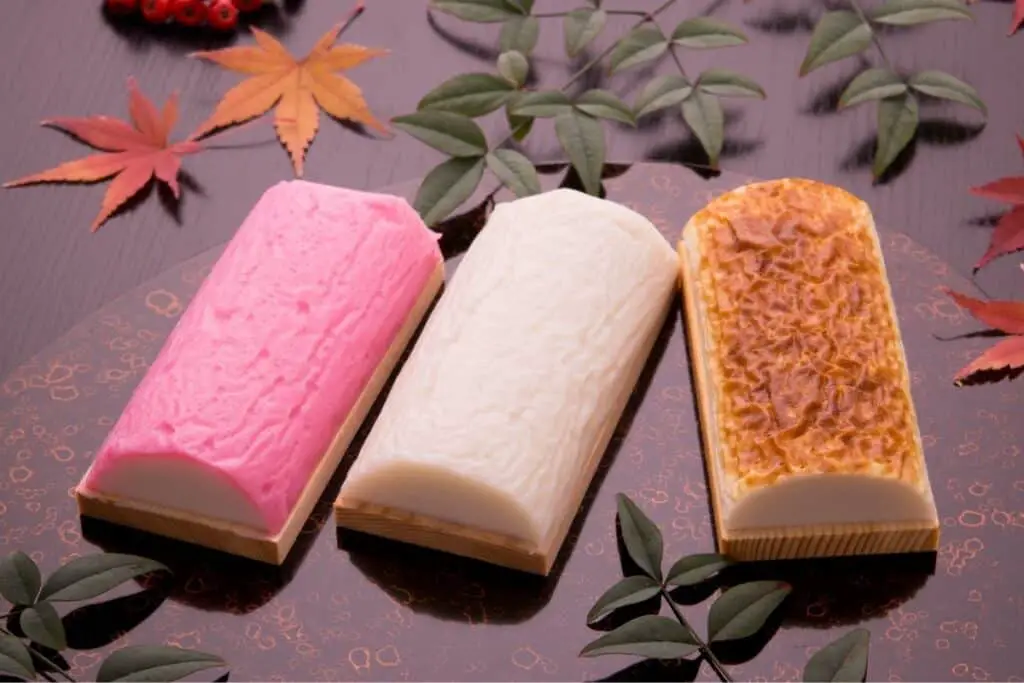
Kamaboko is not too hard to find as it’s commonly served as a protein-rich decoration on top of ramen. It’s decorative in that it is often formed into interesting shapes and decorated with food coloring in fun and intricate designs. That being said, it can also be eaten on its own.
Kamaboko has existed in Japan for centuries and has been made with a variety of types of fish over the years. Red and white kamaboko is often made for celebrations due to red being the color of luck in Japanese culture.
Tara Shirako
It’s not unheard of for adventurous eaters to try animal testicles, if not only for the story they can tell later. Tara shirako is cod testicles, and they are said to be quite tasty. They are often prepared with a mixture of soy sauce and yuzu fruit juice.
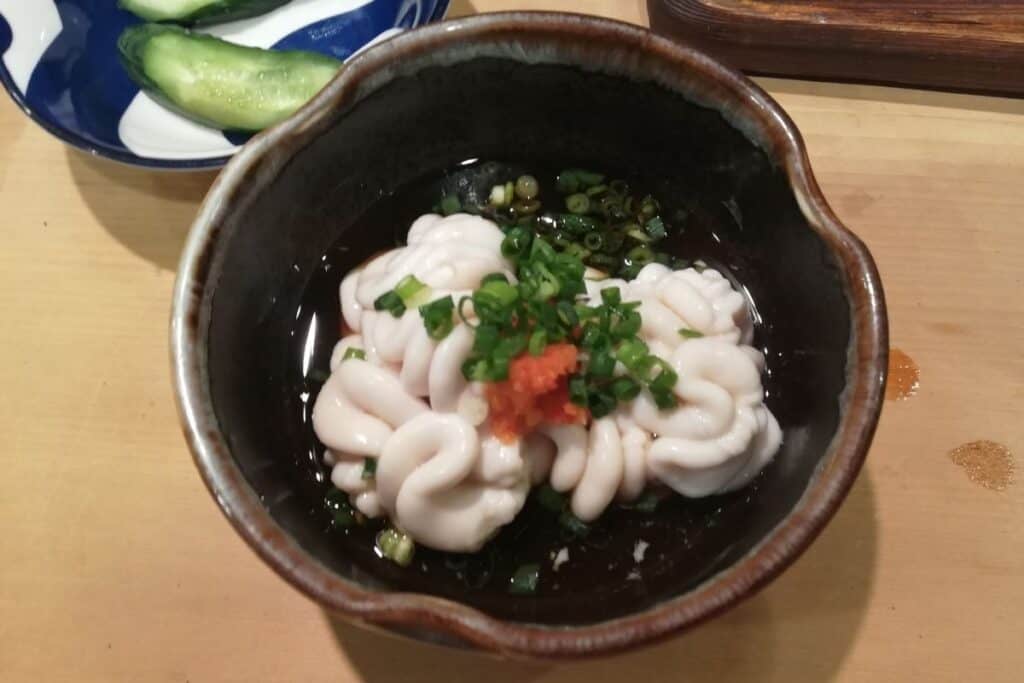
While the testicles don’t have a ton of flavor on their own, mixed with the traditional sauce, their soft texture soaks up the flavor for a delicious meal. You’ll most often find tara shirako in sushi shops or Japanese Izakaya or pubs.
Taro shirako is also sometimes battered with tempura for the tasty mixture of crunch and smooth and creamy textures. They are usually quickly blanched in hot water before preparation.
Maguro
Tuna very often in the west is thought of as a canned fish, but enjoying fresh tuna is an experience tuna lovers need to try. Maguro is raw tuna that is usually served as sashimi or as a sushi topper when dehydrated (bonito). It can be quite pricey, but it is definitely worth the price.
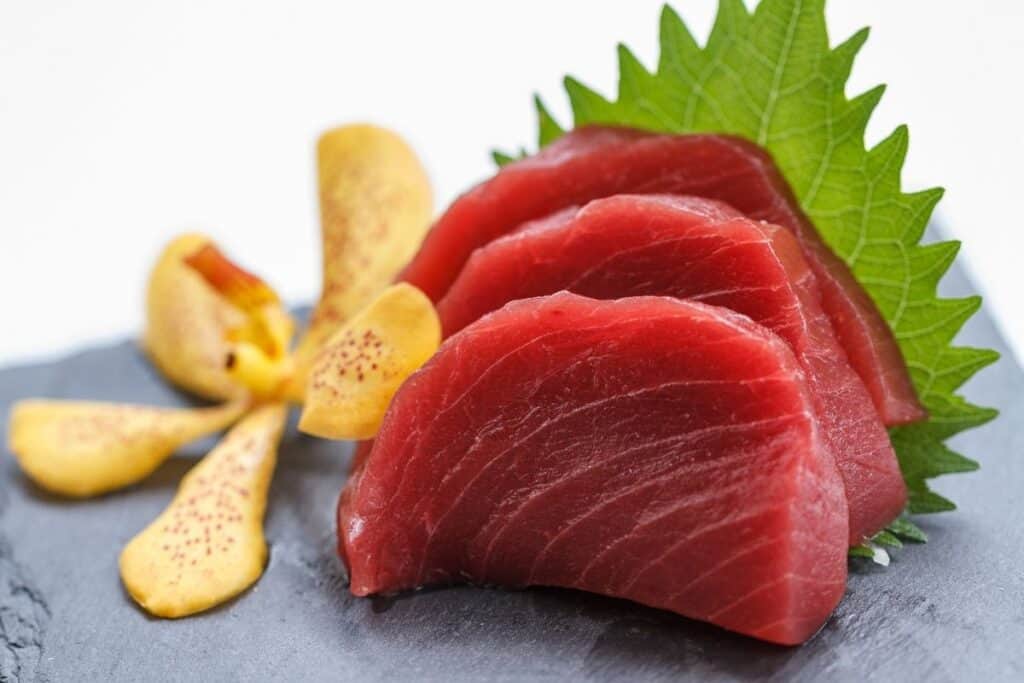
Maguro consists of different cuts of meat, including the toro, which is the fatty belly, or the chu-toro, which is a fatty side. It can also come in an akami cut, which is the lean meat, or o-toro, which is the fatty underside.
Natto
Natto is fermented soybean that doesn’t look as appetizing as it is. They are a healthy dish packed with a lot of nutritional benefits. They can be found in packets with a sauce that is easy to just mix together and enjoy. It has recently seen a resurgence in popularity in Japanese cuisine.
Sometimes natto is considered an acquired taste, not necessarily because of its taste, but because its smell is off-putting at first. However, once you get past the odor, fermented soybeans can be quite delicious.
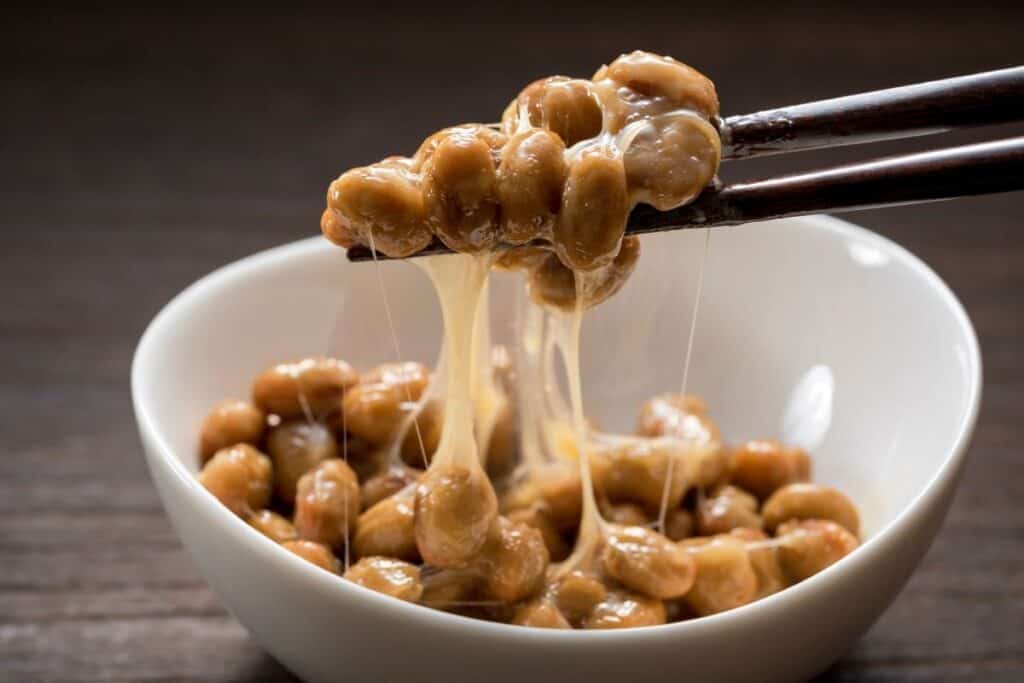
Basashi
Bashashi is raw horse meat, which is not only enjoyed in Japan, but Japanese do prepare basashi in a unique way. The meat is sliced into very thin pieces and dipped in a garlic and ginger mixture with soy sauce. It is also usually prepared with onions.
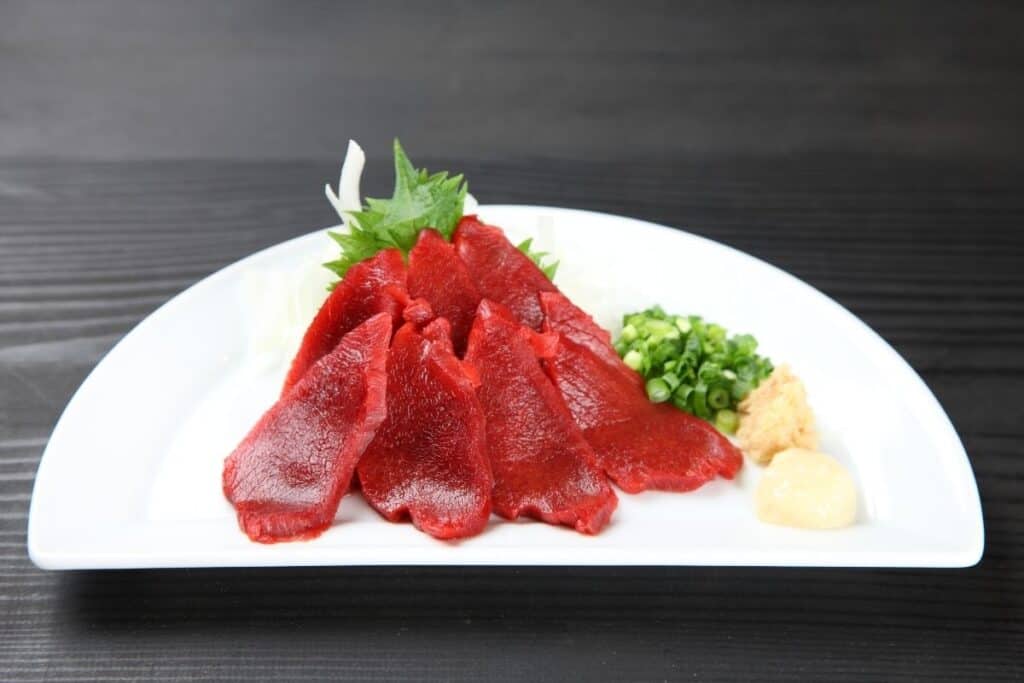
The flavor is said to be a little bit sweet with a gamey texture, similar to venison. It’s important to go to a reputable restaurant to try basashi as the way raw meat is prepared is very important to ensure it doesn’t make you sick from bacterial contamination.

